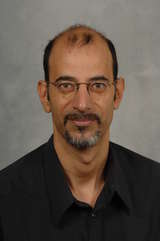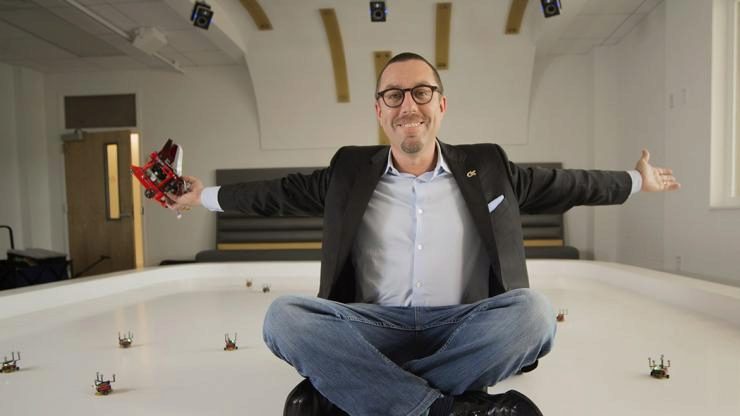 |
| Prof. Panagiotis Tsiotras |
Four Georgia Tech researchers are a part of a multi-university alliance that has just been awarded a five-year, $27 million grant from the U.S. Army Research Laboratory to develop new methods of creating autonomous, intelligent and resilient teams of robots.
Headed up by the University of Pennsylvania, the multidisciplinary alliance includes significant participation by Magnus Egerstedt, executive director of Georgia Tech’s Institute for Robotics and Intelligent Machines, Panagiotis Tsiotras, Dean’s Professor in the School of Aerospace Engineering; Sonia Chernova, assistant professor in the School of Interactive Computing; and Justin Romberg, Associate Chair for Research and Schlumberger Professor in the School of Electrical and Computer Engineering.
The robot teams, consisting of multiple types of robots and sensors with varying abilities, are designed to assist humans in a wide range of missions in dynamically changing, harsh and contested environments. These include search and rescue of hostages, information gathering after terrorist attacks or natural disasters, and humanitarian missions.
The award is part of ARL’s Distributed and Collaborative Intelligent Systems and Technology (DCIST) Collaborative Research Alliance. Penn Engineering will lead this alliance in collaboration with the Army Research Laboratory, Massachusetts Institute of Technology’s Aeronautics and Astronautics Department, and the Georgia Institute of Technology. The consortium also includes faculty from University of California San Diego, University of California Berkeley and University of Southern California.
DCIST involves imbuing teams of heterogeneous robots and sensors with the intelligence to learn and adapt to different settings and perform new tasks along with humans. Key to this vision is building resilience to disruption.
Teams of robots and human first responders might eventually be used to survey a disaster site for victims, but unpredictable environments and ongoing hazards could damage or destroy some of the robots, or disrupt communications between them. If each robot were just preprogrammed and given specific instructions, that could lead to gaps in their search. But if the team were able to reconfigure itself in response to damage, the remaining robots could collaboratively decide how to reorganize and work with human partners to complete the mission.
"One of the main challenges in these situations is partial knowledge or poor communication between all the agents in the team," said Tsiotras.
"Designing resilient, autonomous teams that perform in a predictable and desirable manner despite these challenges is the main objective of the DCIST program. Although primarily motivated by engagement scenarios the Army is interested in, the results of this multi-year, multi-investigator effort will nonetheless have an immediate impact on all future autonomous robotic systems, both in the military and the civilian domain.”
Egerstedt echoed Tsiotras's enthusiasm:
“Through this exciting project, Georgia Tech will help develop novel tools and techniques that enable human operators to work effectively and safely in teams together with autonomous robots,” he said. “These types of questions connect well with our expertise in the areas of human-robot interactions, distributed decision making and learning, and swarm robotics.”
Vijay Kumar, Penn Engineering’s Nemirovsky Family Dean and director for the DCIST program, concurred:
“We want to have teams of robots that know how to work together, but can figure out how to keep working even if some of their teammates crash or fail, if GPS signal is unavailable, or if cloud services are disrupted.This means designing networks with loose, flexible connections that can change on the fly. That way, a single event can’t bring down the entire network. More importantly, we want them to learn to perform tasks they may have never performed and work alongside humans that they may never have worked with.”
The three important research areas are distributed intelligence and learning; creating a cohesive team of autonomous robots, sensors, computational resources and human experts; and building resiliency in group behaviors.
With multiple types of assets collectively assessing a complex, continuously changing scenario and determining how best to assign their individual skills to a broadly defined problem, such human-robot teams of the future would be ideal first-responders to dangerous situations.
“The technology we’re working will better allow humans to respond by projecting their intelligence without directly coming in harm’s way,” Kumar said.

Prof. Magnus Egerstedt in the recently opened Robotarium